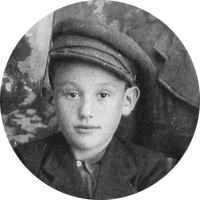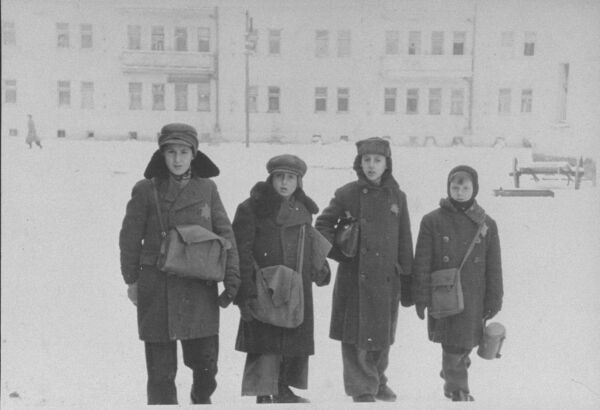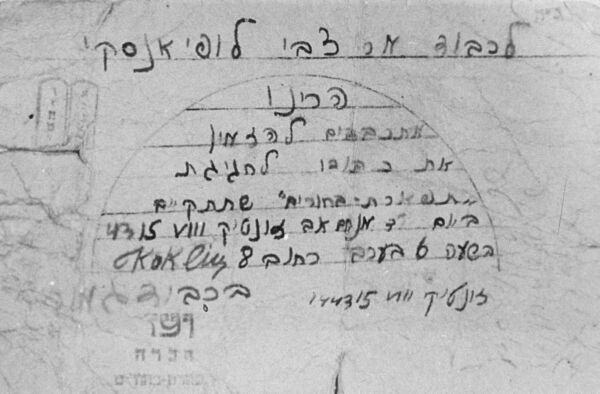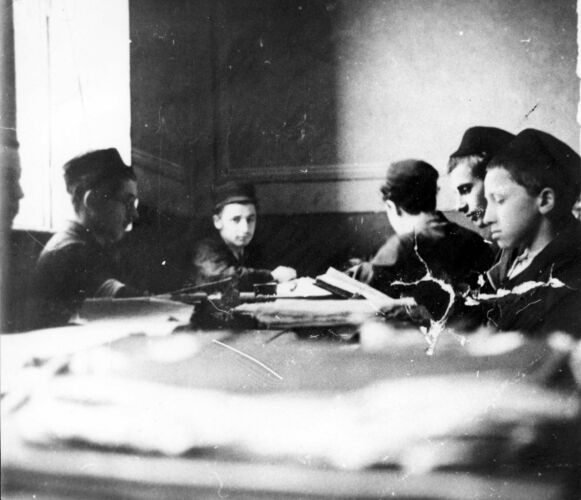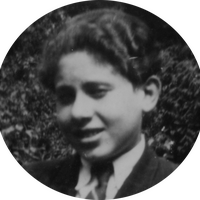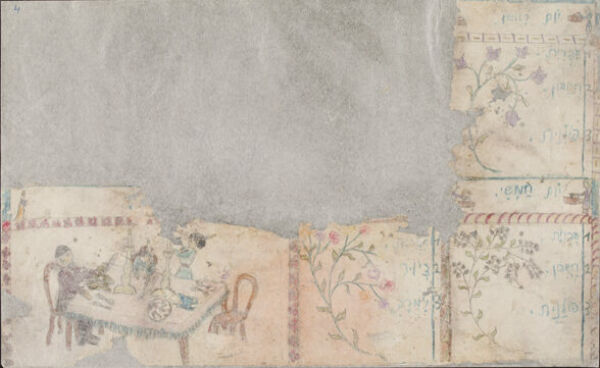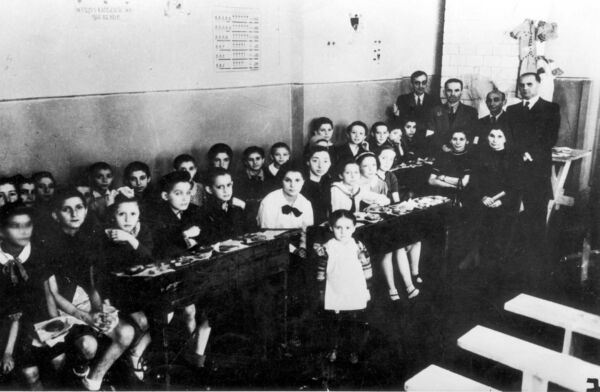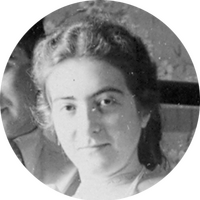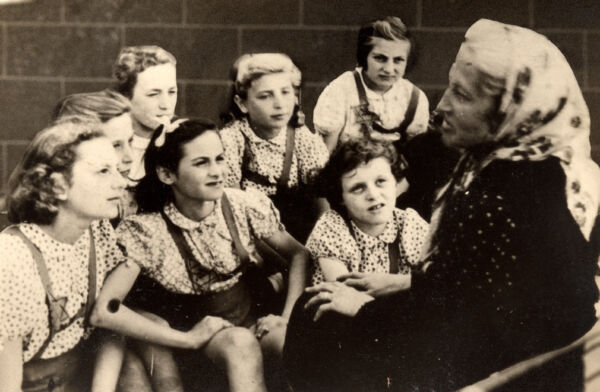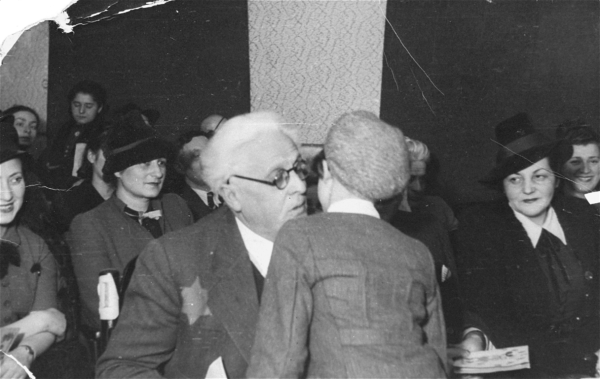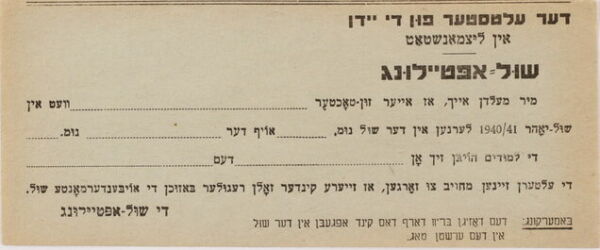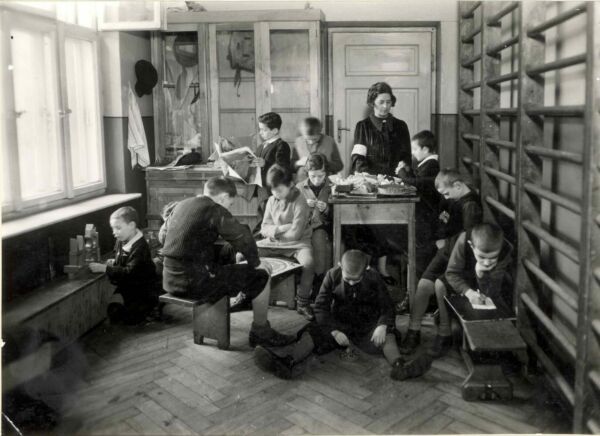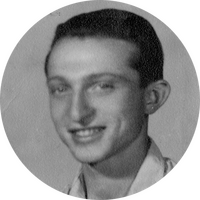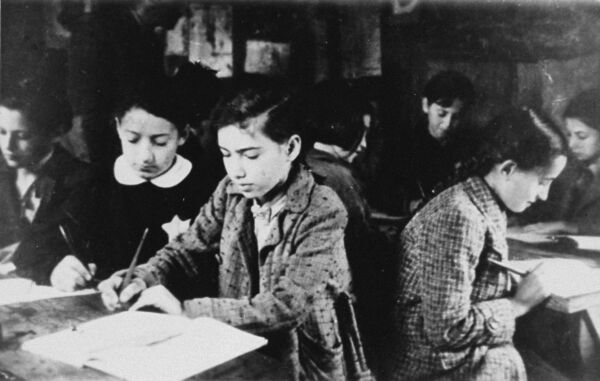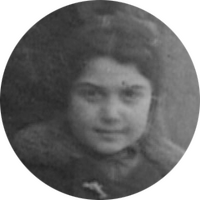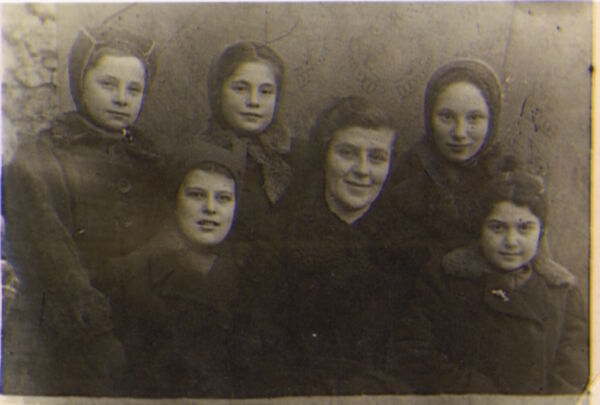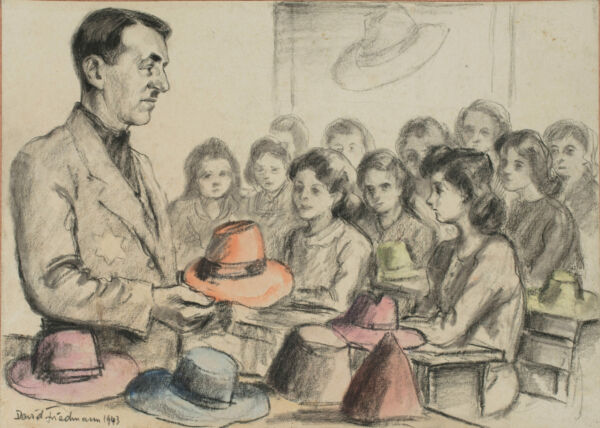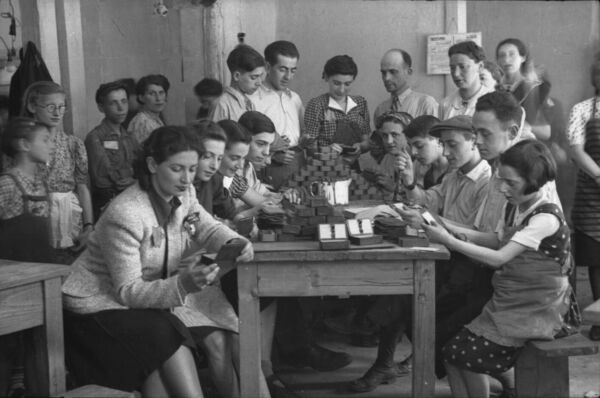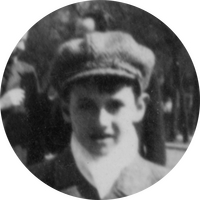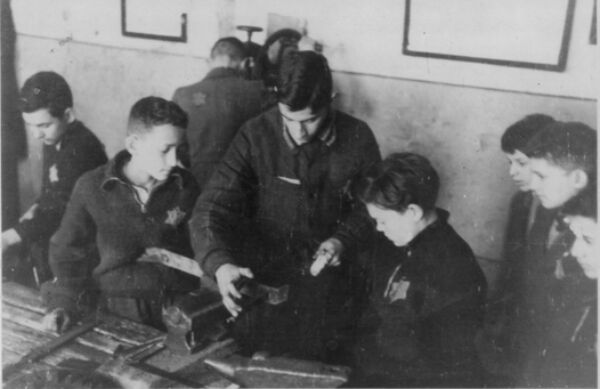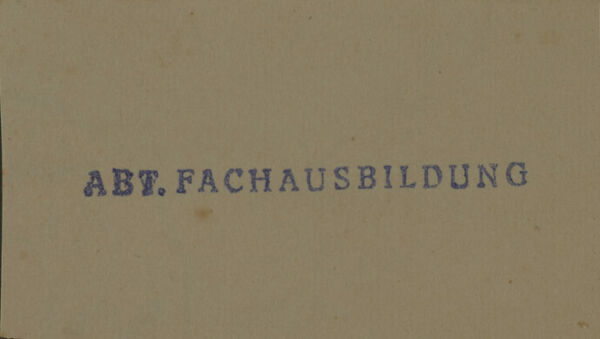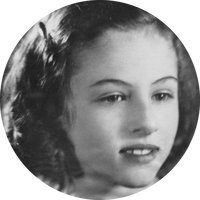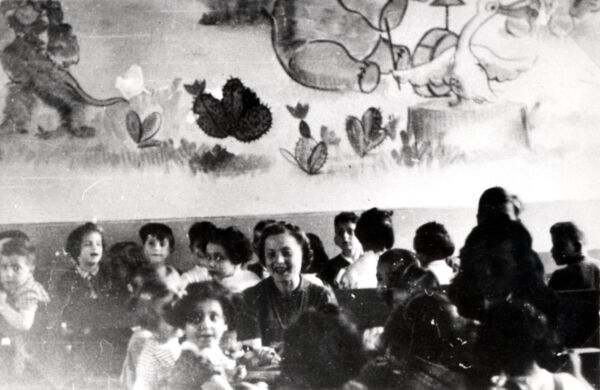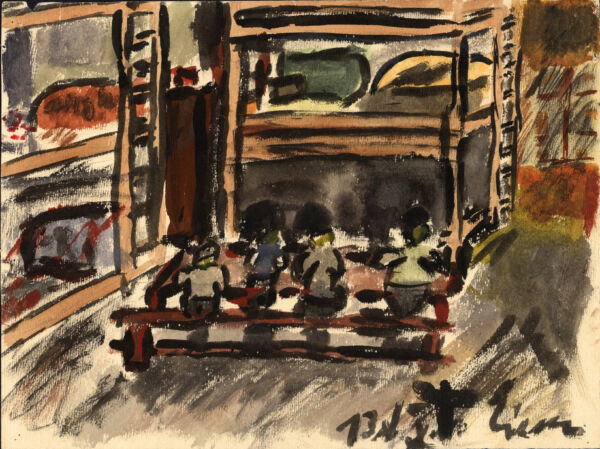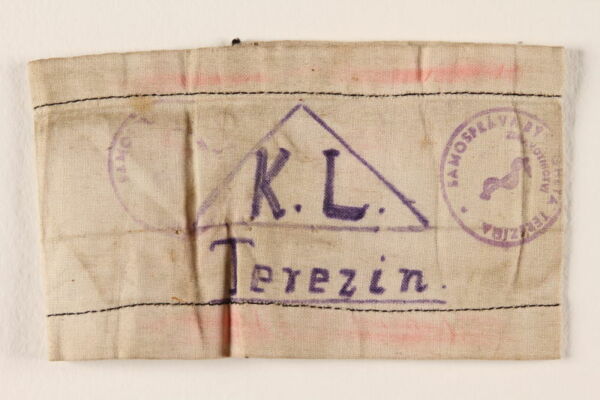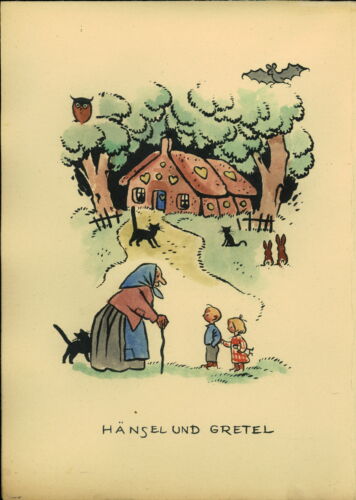Chapters
Chapter 1
Ghettos
What makes a classroom? Are there desks, books, pencils and a teacher? Do students show up ready for a day of learning? In the ghettos of Europe, a school could be simply a cold shed or a concealed room. It was somewhere students went to escape cramped living spaces or to get something to eat that day.
Scroll Down

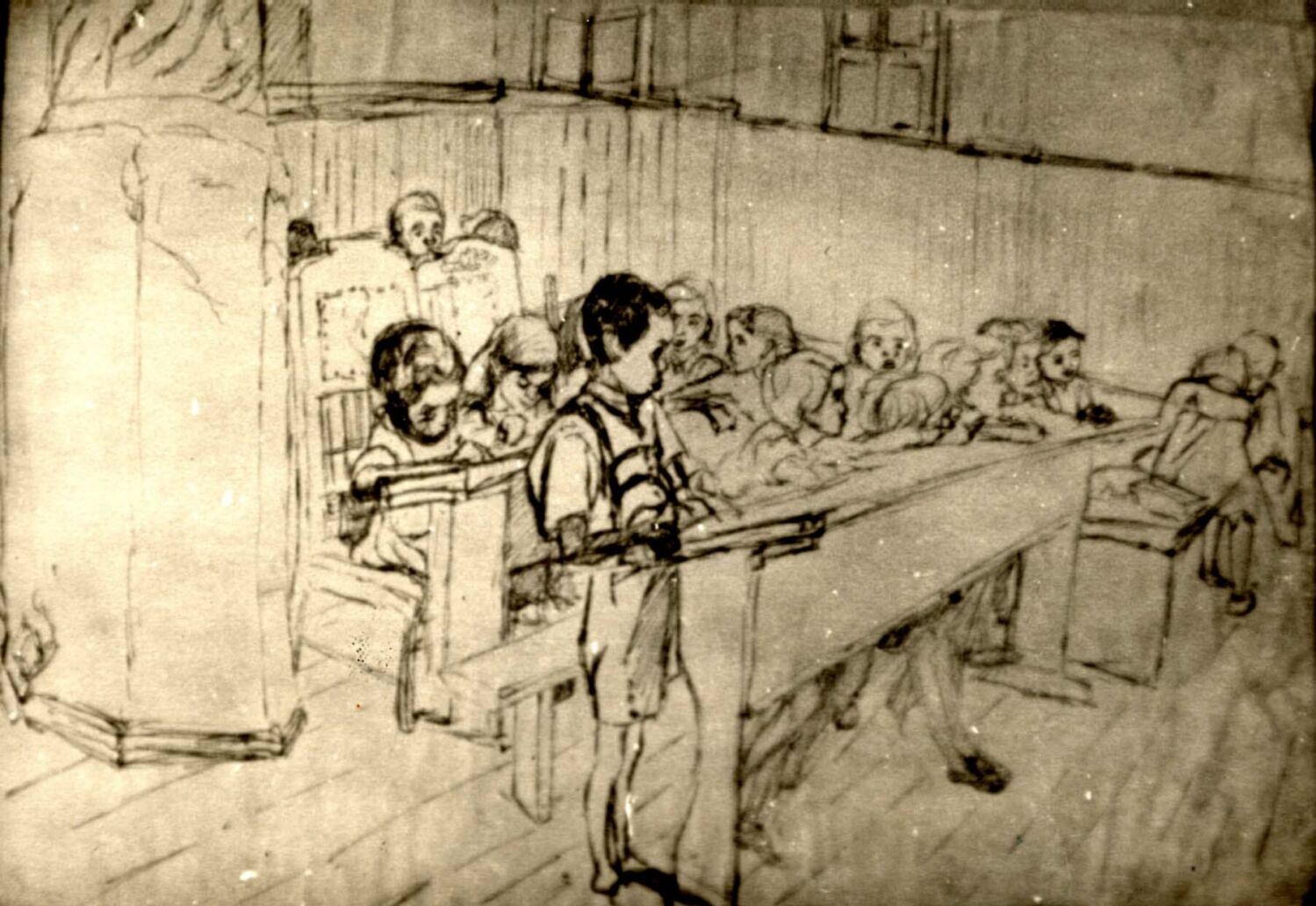
A sketch by Jacob Lifschitz titled “At a ghetto school.” The artist perished in the Holocaust. Yad Vashem Photo Archive, Jerusalem. 3380/720.
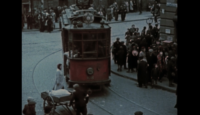
Inside the Warsaw Ghetto
01:09
Resistance in the Warsaw Ghetto
“So many terrible things were going on in the Warsaw ghetto…that, if you weren’t there, you really can’t understand it. Even if you were there, you can’t understand it….
And there was always resistance to what was forbidden. There were lots of underground newspapers, underground schools for the children, universities where professors had smuggled in research materials and people were being taught, some of them to become doctors.”
Did you know that?
When the Nazis established the Warsaw ghetto in 1940, they made it illegal to open schools. Although they began to allow the Jewish administration in the ghetto to open schools in 1941, secret schools were set up from the very beginning.

Did you know that?
By the summer of 1943, there were
13,881
Jewish children under the age of seventeen working in the Lodz ghetto.

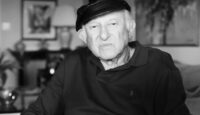
Learning in Ghetto Trade Schools
00:56
“We had several classes alternating between mornings and afternoons. We taught the theory of metals, engineering drawing and some clandestine cultural classes on Hebrew and Jewish history, which were forbidden by the Germans.
All these activities allowed me to direct my mind away from the one thought that floated in my head during the three years in the ghetto: How will I die?”
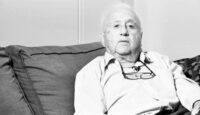
Cultural Life in Theresienstadt
02:00
“Later I moved into the Mädchenheim, the girls’ home. In every room there were wooden bunks stacked one over the other in layers of three. I had fun living among the children. During the afternoon, teachers stood in the middle of the room and taught us the high school curriculum. Whenever the person standing guard announced that a Nazi inspector was on his way, the books disappeared under mattresses and knitting took over….
We were hungry for a normal life we did not have, but in our little dreams, we tried to forget reality.”
cards
Key Ghettos and Camps
How did the conditions in Nazi ghettos and camps affect Jewish youth and their education?
Click on “Learn more” to read about six of those ghettos and camps.
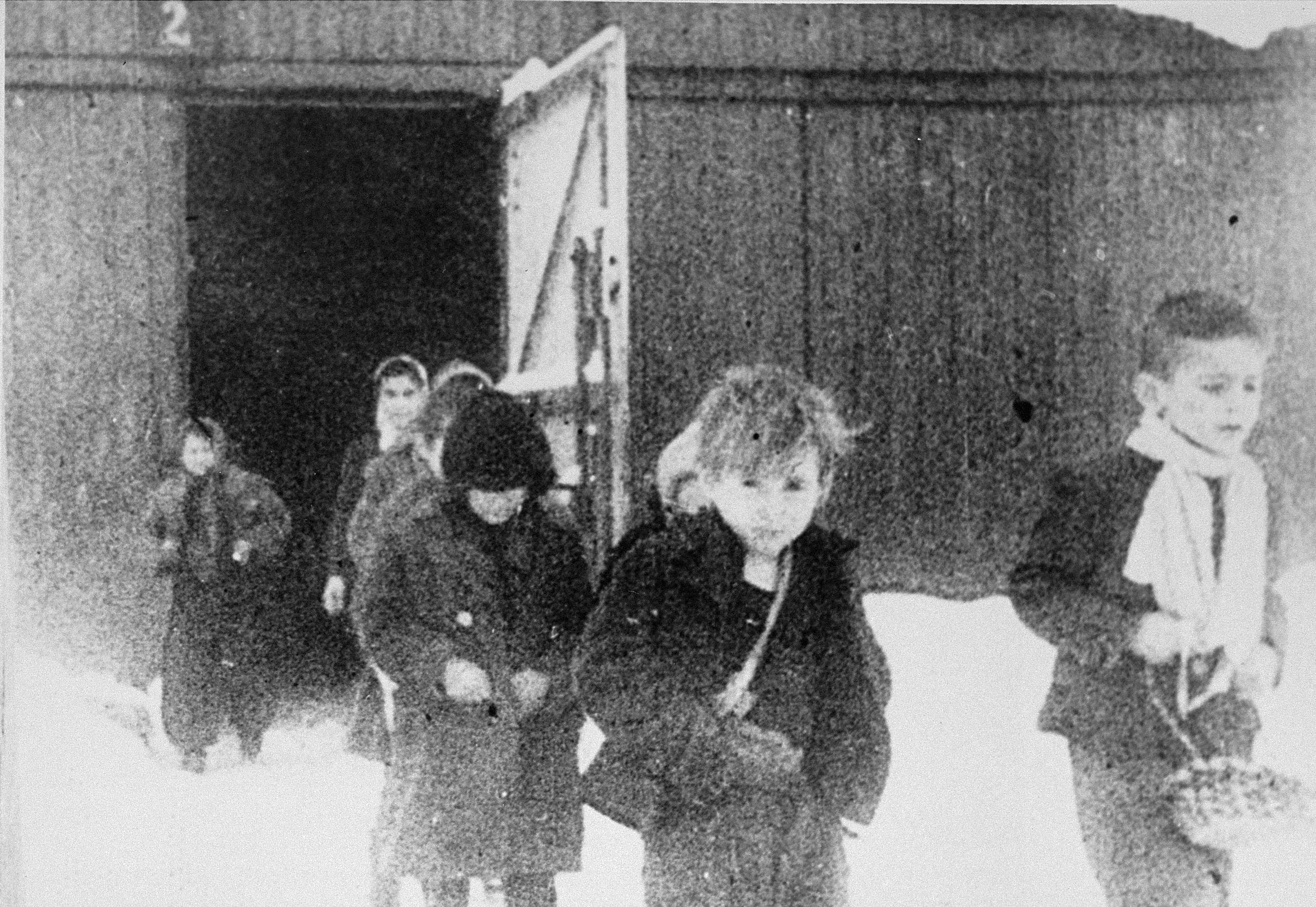
Chapter 2

